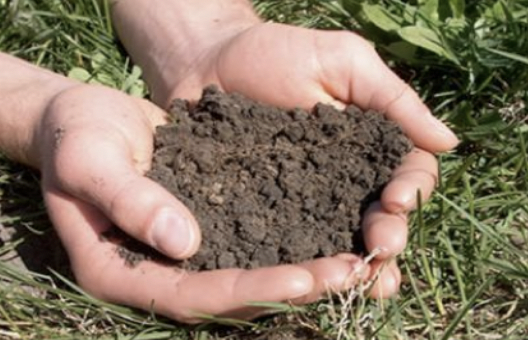Soil Test
New ResidentialWhat is a Soil Test?
A soil test refers to the technical analysis of a soil sample that provides information about nutrient content, soil pH, soil composition, and levels of contaminants such as lead.
Different plants and landscapes have different soil requirements. The results of a soil test help to guide decisions about soil amendments, plant selection, landscape design, and water management (see Native and Adapted Plants, Water-Efficient Landscape Design, Edible Landscaping, and Wildlife Habitat).
Contaminants, including lead, cadmium, mercury, nickel, and copper, are often found in soils in urban areas, on former industrial or commercial sites, and sometimes on lands previously used for orchards (see Brownfield and Infill Sites). Toxins may be absorbed directly through ingestion (a particular hazard for children) or indirectly through consumption of foods grown in the contaminated soil. Employ safe gardening practices and techniques for soil remediation to reduce risk.[1] For more information on soil remediation techniques see Health Benefits of Urban Agriculture.

Figure 1 – Soil (Source: University of Kentucky Agricultural Extension)
How to Implement a Soil Test
Soil sample kits are available for purchase from the local Rutgers Cooperative Extension county office, garden centers, or online. Alternately, mail collected samples to the New Jersey Agricultural Experiment Station’s (NJAES) Soil Testing Laboratory. Follow the correct procedures for collecting soil to achieve accurate results.[2]
Conduct soil tests every 2 to 3 years in the spring or fall before fertilization and avoiding wet conditions. For lawn care, conduct sampling in the summer to prepare for fertilization in the fall.
Use a sampling probe, trowel, or spade to collect ten to fifteen cores or slices of soil six inches in length from the surface in the test area. Mix all of the soil samples in a bucket and put two cups into a plastic bag. Send a sample to a soil sample laboratory for testing.
Interpreting the Soil Test
A basic soil fertility test comes with recommendations for nutrient applications from the local extension office. Consider organic alternatives to synthetic or chemical fertilizers. For example, ashes from a fireplace or wood stove can raise the pH of soil instead of lime. Compost can increase the organic matter in the soil, decreasing the need to add fertilizer.[3]
Benefits
- Optimize plant health and beauty – Too much or too little of any nutrient can harm plant growth. Conducting a soil test identifies appropriate nutrient applications.
- Save money – Soil tests save money in the long run by the preventing purchase of unnecessary chemicals.
- Protect natural resources and habitat health – Eliminating unnecessary applications of harmful pesticides or fertilizers protects environmental and human health.
- Protect human health – Soil tests can help identify harmful toxins or contaminants in the soil and inform decisions about locating plants (particularly edible plants) and/or the need for soil remediation.
Costs
There are multiple kinds of soil tests. A fertility test from NJAES that measures nutrient and pH levels includes recommendations and costs $20. Lead screening tests cost an additional $20. Many other tests are available measuring everything from organic matter content to soil textural class to soluble salt levels. These tests range from $17 to $138. Contact the local Rutgers Cooperative Extension office to determine what tests are appropriate for a particular project.
Resiliency
Healthy soil supports ecological resilience by increasing the biological diversity of plants and animals in a given area, which in turn, enhances the ability of the natural system to rebound after a disturbance. Soil testing, especially for homes located in coastal areas, tidal estuaries and along rivers, helps to determine which plants are best suited to act as a buffer to encroaching water during flood periods and to provide defense against erosion. Soil tests also help inform decision making about the location of edible plants, which can be a resource during emergencies.
[1] Bellows, Anne C., Katherine Brown and Jac Smit. 2003. Health Benefits of Urban Agriculture. https://community-wealth.org/content/health-benefits-urban-agriculture (accessed April 10, 2018).
[2] Heckman, Joseph R., Susan Lance-Scibilia and Stephanie Murphy. 2004. Soil Testing for Home Lawns and Garden. Rutgers Cooperative Research and Extension. https://njaes.rutgers.edu/fs797/ (accessed April 10, 2018).
[3] University of Massachusetts Extension, Agricultural Engineering – Vegetable Program. Compost Analysis and Interpretation. https://ag.umass.edu/vegetable/fact-sheets/compost-production-analysis-regulation (accessed April 10, 2018)
Resources
- Landscape for Life
- Rutgers New Jersey Agricultural Experiment Station
- Rutgers: If Plants Could Talk
- Soil Science Society of America
